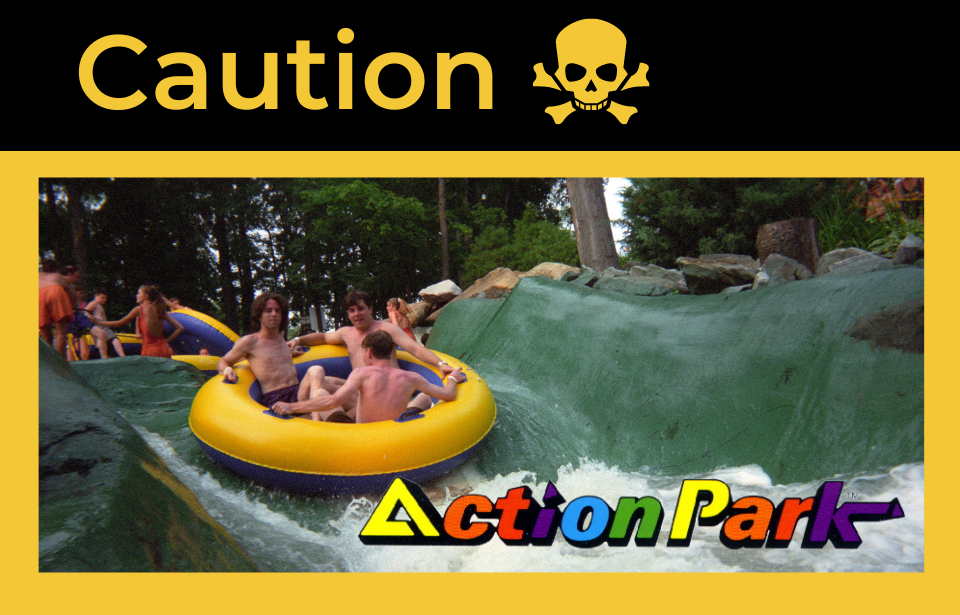In 1976, Wall Street tycoon Gene Mulvihill transformed the Great Valley/Great Gorge Ski Resort in Vernon, New Jersey into the craziest amusement park America had ever seen. A water slide with a 360-degree loop left kids with bloody noses, the “Alpine slide” caused broken bones, and the wave pool saw several drownings. Ultimately, Action Park would go down in history as the place where lawlessness, chaos, and death ran amuck.
Building Action Park
Mulvihill and his company Great American Recreation came up with the idea for Action Park while thinking of ways to increase revenue for Great Valley Ski Resort in Vernon, New Jersey during the summer months. Inspired by other resorts in the area, Mulvihill had a 2,700-foot-long Alpine slide installed on one of the ski hills. Action Park was officially opened on July 4, 1978. It featured two waterslides and a go-kart track along with the Alpine slide.
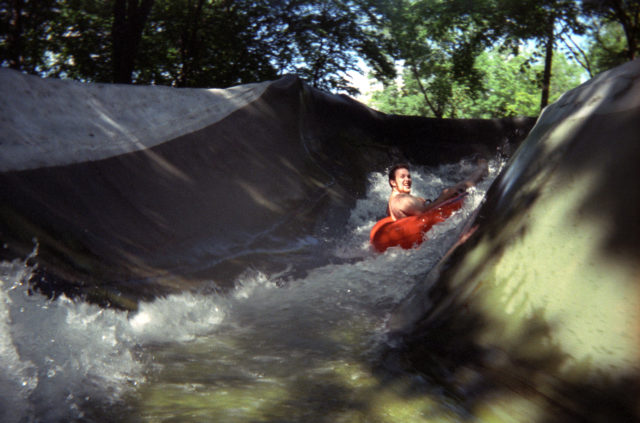
The park regularly held quirky events like a Dolly Parton lookalike contest. Soon, Action Park was growing in popularity, and Mulvihill was devising new attractions to keep the crowds coming back. In 1980, a small swimming pool was added, establishing the Waterworld section – which would become one of the earliest water parks in America. The go-kart area became Motorworld, with new attractions situated a bit too close to the busy State Route 94 highway.
Before long, Action Park consisted of 75 attractions, including 35 motorized rides and 40 waterslides. Here are just a few of the most notorious rides at the park.
The Cannonball Loop
The early 1980s were some of the best years at Action Park. Most rides were fully operational and news about the high injury rate had yet to spread. In 1983, Mulvihill devised another crazy attraction, one of the park’s most infamous rides: the cannonball loop. Mulvihill – who had no knowledge of engineering or designing rides – laid out his plan to create an enclosed waterslide with a 360-degree, gravity-defying loop.
The Cannonball Loop was so intimidating that employees – many of whom were teenagers – were offered $100 to test it. Before real humans tested the slide, dummies were sent down but always came out completely mangled, dismembered, and even decapitated. The designers added padding to the walls of the loop which seemed to fix the problem.
After the slide was opened, riders came out with mysterious cuts. Upon further investigation, it was revealed that the cuts were coming from teeth that had been lodged in the foam padding from kids being tossed around inside the slide. A former Navy physician also discovered that riders were experiencing as much as 9-Gs of acceleration when passing through the loop.
The Cannonball Loop was promptly closed at the request of the Advisory Board on Carnival Amusement Ride Safety after a month of operation. The Loop was reopened a couple of times in 1995 and 1996 but was shut down again due to more injuries.
Alpine Slide
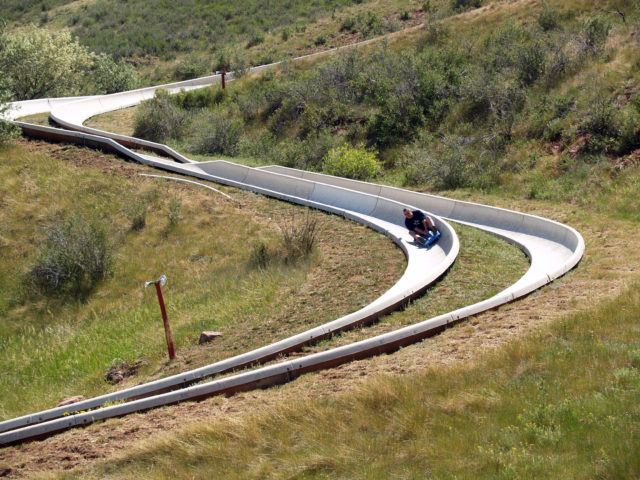
The alpine slide spanned 2,700 feet along a mountain beneath one of the ski area’s chairlifts. Riders could take the lift up to the top of the slide and ride down on small sleds with only a brake/accelerator control stick to navigate the curving track. Before long, this became one of the park’s most dangerous rides.
According to one former employee, the stick that controlled the sled only had two options: extremely slow and “death awaits.” The slide itself was made out of concrete, fiberglass, and asbestos – the perfect recipe for horrific scrapes and broken bones, especially since the majority of park-goers wore their bathing suits on the ride. To make matters worse, many people waiting on the chairlift above the track would spit at and harass the ones below.
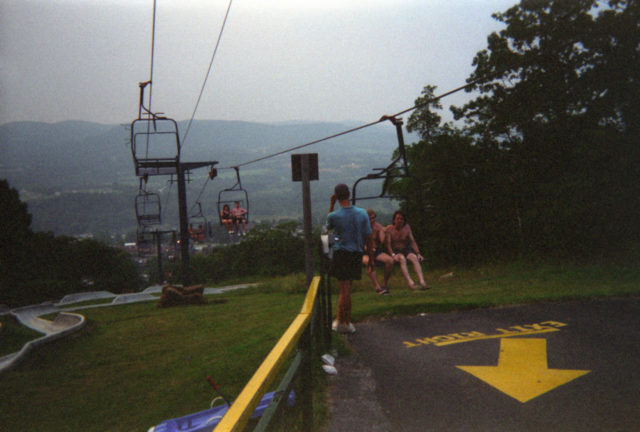
According to state regulators, the alpine slide was responsible for 26 head injuries and 14 fractures in 1984 and 1985 alone.
The slide was also the site of the park’s first fatality. In 1980, 19-year-old George Larsson Jr. – who used to operate the ski lift at Vernon Valley Ski Resort – was thrown from the slide when his sled veered off the track, launching him head-first into a rock. Larsson died after several days in a coma.
Action Park denied any responsibility for the incident, claiming that since Larsson was an employee using the slide at nighttime in the rain it wasn’t the park’s fault. They also said that since he was an employee, the death did not need to be reported to state regulators. Ultimately, this omission would lead to the deaths of five more people.
The ‘Grave’ Pool
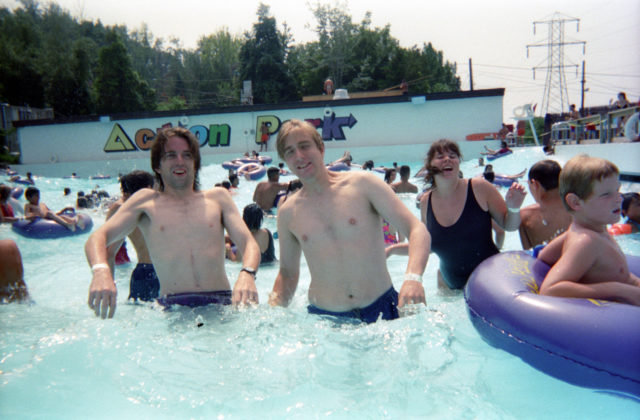
The Tidal Wave Pool was another fatal attraction at Action Park. Opened in 1981, two deaths occurred in the pool – which lifeguards dubbed the “grave pool.” It was 100 feet wide and 250 feet long, and it could hold as many as 500 to 1,000 people. The waves generated in the pool lasted for 20 minutes and could reach as high as three feet.
It was also notoriously deep at the far end but with little signage warning swimmers about the depth, many who couldn’t swim found themselves practically drowning in the far end. Twelve lifeguards were on duty per day at the pool, and on the busiest days, they rescued as many as 30 people – a shocking statistic compared to the 1-2 people average saves per summer a lifeguard makes at community pools or lakes.
Half of the fatalities that happened at Action Park occurred in the wave pool. Three people died by drowning in the pool: 15-year-old George Lopez, 20-year-old Donald DePass, and 18-year-old Gregory Grandchamps.
The Tarzan Swing
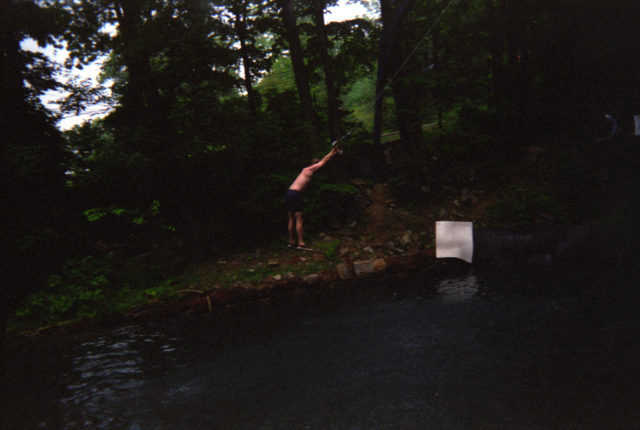
The Tarzan Swing seemed innocent at first, but it too proved to be dangerous. The swing consisted of a 20-foot-long cable hanging over a spring-fed pool. The lines of guests that formed were usually incredibly long just for one chance to do the coolest-looking jump they could. In the early days of the park, the part that swimmers jumped from was not over the water. Instead, it was a padded area. Some people would let go of the rope as soon as they jumped off the padded platform, slipping and falling into the water.
If you did manage to swing out to the middle of the pool, you would be greeted with the frigid cold temperature of the water. At times, the water was so cold and so shocking that swimmers couldn’t swim out on their own. In 1984, one man died from a heart attack after the shock of the Tarzan Swing.
What happened to Action Park?
The havoc that Action Park wreaked not only on patrons but also on the Vernon, New Jersey community eventually grew out of control. The local emergency room claimed to have treated five to ten injured people from the park on their busiest days, prompting the park to purchase extra ambulances to keep up with the demand.
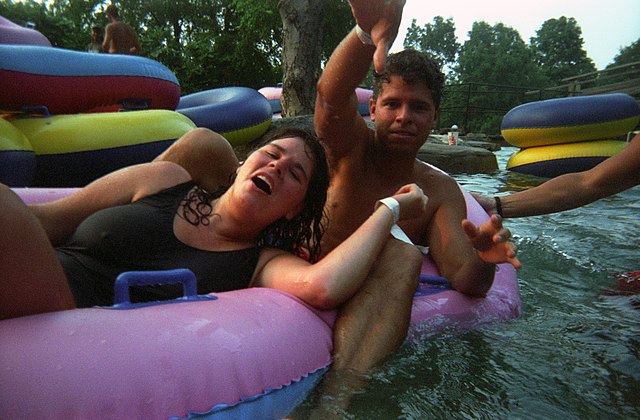
While the deaths of six people on park grounds could have necessitated several major lawsuits, the only legal troubles the park encountered were finance related. In 1995, First Fidelity Bank – which lent $19 million to the company that owned Action Park, Great American Recreation, and 15 other connected corporations – filed a suit in an effort to foreclose the debt they were owed. Law firms that were left with unpaid legal fees also sued for what they were owed, but a group of creditors came forward and loaned the park $14 million to stave off foreclosure.
In 1996, the same creditors petitioned to force the company into bankruptcy. The following summer, Great American Recreation officially halted all operations including Action Park. The area was later purchased for $10 million and a $20 million dollar restoration project began to transform the trashy, outdated park into an upscale resort and water park.
More from us: Joyland: A Once-Thriving Amusement Park That Now Sits Open To Looters
Today, you can technically still visit attractions like the Tarzan Swing at Action Park, but this time around the water is warmer, the wave pool is shallower, and the facilities are properly inspected to ensure visitor safety at what is now called Mountain Creek Waterpark.
